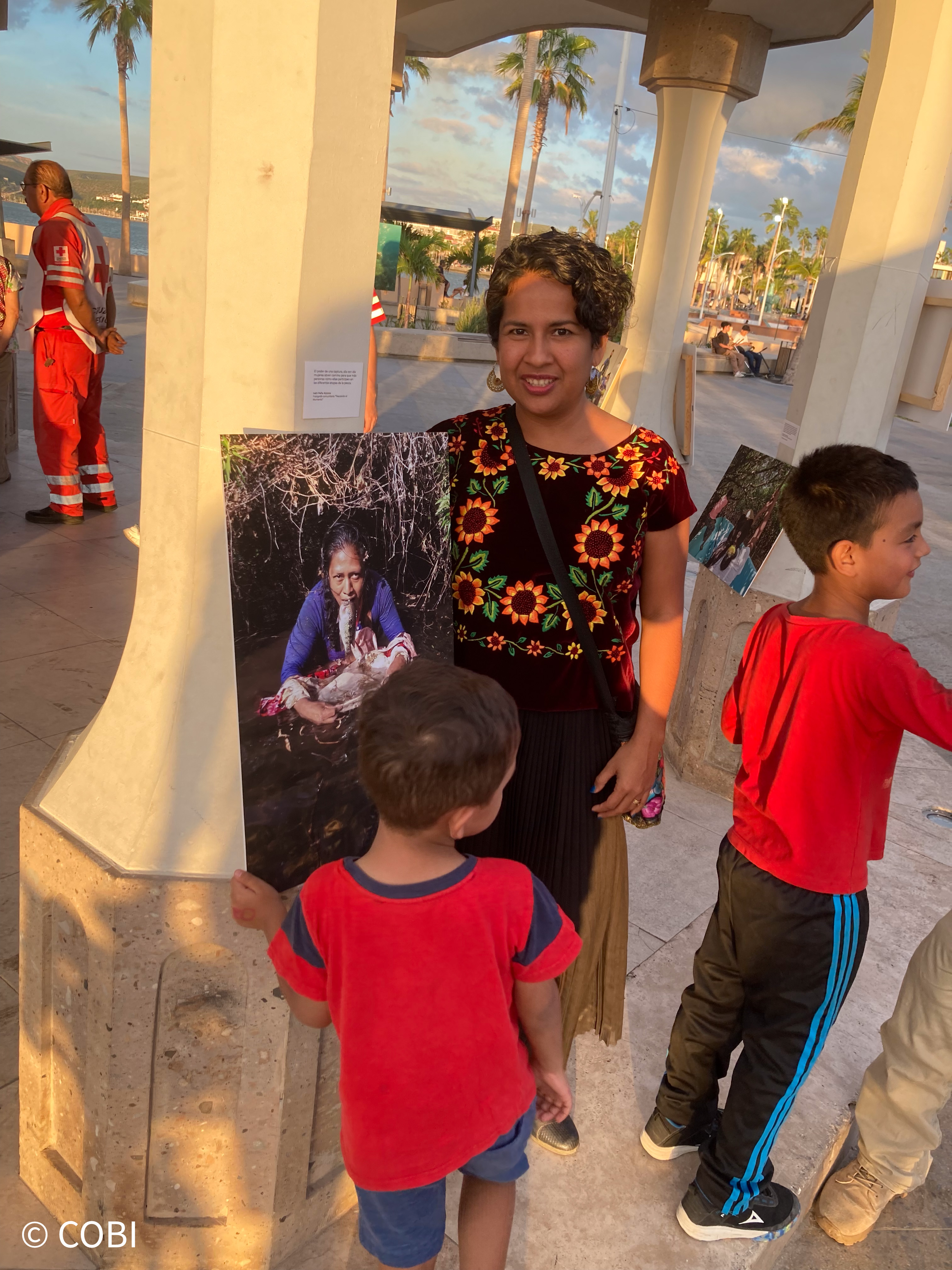Creación de un centro de demostración de CBEMR para el aprendizaje y la investigación
La zona de Kitangani, situada cerca de Mokowe, ha tenido problemas hidrológicos subyacentes después de que la arena dragada del canal se vertiera en el manglar. Con el tiempo, los canales de agua se bloquearon considerablemente, lo que dificultó el flujo de oxígeno y nutrientes esenciales para la regeneración y el crecimiento de los manglares.
En colaboración con el KFS, el Instituto de Investigación Forestal de Kenia (KEFRI) y el Proyecto de Acción de los Manglares (MAP), Wetlands International inició los esfuerzos de restauración del sitio de Kitangani reuniendo a un amplio grupo de partes interesadas. Involucramos a las comunidades locales a través de organizaciones como Pate Resources and Tourism Initiative (PRATI) y Lamu Community Forest Association (LAMACOFA), así como al Kenya Marine and Fisheries Research Institute (KMFRI) y al gobierno del condado de Lamu.
Se retiraron los escombros del canal principal de agua para mejorar las condiciones biofísicas, incluida la calidad del suelo, los niveles de oxígeno y la disponibilidad de nutrientes, favoreciendo así la regeneración natural. Además, se llevó a cabo una limpieza del lugar, ya que la contaminación por plásticos sigue siendo un problema persistente en el archipiélago de Lamu. También se establecieron cuadrantes con fines de vigilancia.
Selección del emplazamiento y asociaciones:
Para establecer con éxito una zona de demostración de la RBMC hay que empezar por seleccionar un manglar degradado con un alto potencial de restauración y accesible para la participación de la comunidad. Es fundamental tener en cuenta las características ecológicas del lugar, como la hidrología, la salinidad y la composición de las especies. Igualmente importante es garantizar una propiedad clara o acuerdos de tenencia para evitar conflictos y promover la sostenibilidad a largo plazo. También son esenciales las asociaciones sólidas, que reúnan a organismos gubernamentales, instituciones de investigación, ONG y comunidades locales para colaborar eficazmente. Unas funciones, responsabilidades y canales de comunicación claros entre los socios garantizarán unos esfuerzos coordinados y una utilización eficaz de los recursos. Por ejemplo, el KEFRI se encargó de supervisar el éxito de las intervenciones, mientras que el KFS se aseguró de que se obtuvieran todas las autorizaciones para las medidas de restauración y se movilizara a los agentes pertinentes.
Compromiso de la comunidad y conocimientos técnicos:
La implicación de la comunidad es un elemento central de los centros de demostración de la EMCR. Las comunidades locales deben participar activamente en todas las fases del proyecto, desde la planificación y la ejecución hasta el seguimiento y la evaluación. Incorporar los conocimientos ecológicos tradicionales y las perspectivas comunitarias a las estrategias de restauración garantiza soluciones culturalmente apropiadas y sostenibles. Este enfoque participativo ha aportado un sentido de propiedad y responsabilidad entre los miembros de la comunidad, contribuyendo al éxito a largo plazo del proyecto. Además, el acceso a conocimientos técnicos en ecología de manglares, hidrología y técnicas de restauración es crucial. La contratación de especialistas de MAP, KMFRI, KFS y KEFRI para realizar evaluaciones del lugar, desarrollar planes de restauración y proporcionar orientación técnica garantiza que el proyecto se base en conocimientos científicos sólidos y en las mejores prácticas. Facilitar la transferencia de conocimientos y la capacitación de los miembros de la comunidad y los profesionales locales les permite participar activamente en los esfuerzos de restauración y mantenerlos.
Movilización de recursos y supervisión:
Se necesitan recursos adecuados para establecer y mantener con éxito un lugar de demostración de RBMC. Esto incluye asegurar la financiación para la preparación del lugar, las actividades de restauración, el equipo de supervisión y la participación de la comunidad. La movilización de contribuciones en especie de los socios, como mano de obra, materiales y conocimientos técnicos, puede optimizar aún más la utilización de los recursos. El establecimiento de mecanismos de financiación sostenibles es esencial para el mantenimiento y la supervisión a largo plazo de los lugares, garantizando el impacto continuado del proyecto. También es necesario un plan de seguimiento exhaustivo para seguir los avances, evaluar la eficacia de las técnicas de restauración y documentar las lecciones aprendidas. La utilización de herramientas y tecnologías de seguimiento adecuadas, como la Herramienta de Seguimiento de la Restauración de los Manglares y Global Mangrove Watch, permite tomar decisiones basadas en datos y realizar una gestión adaptativa.
Compartir los resultados del seguimiento con las partes interesadas a través de los comités nacionales y subnacionales de gestión de los manglares fomenta la transparencia y la rendición de cuentas, el aprendizaje colaborativo y la mejora continua.
La restauración hidrológica es clave: Abordar los problemas hidrológicos subyacentes despejando los canales de agua obstruidos fue crucial para facilitar la regeneración natural y mejorar las condiciones del lugar.
La participación de la comunidad es esencial: La implicación de las comunidades locales a través de organizaciones comunitarias garantizó su participación y apropiación del proceso de restauración.
Las asociaciones mejoran la eficacia: La colaboración con KFS, KEFRI, MAP, KMFRI y el gobierno del condado de Lamu aportó valiosos conocimientos, recursos y apoyo. Estos grupos están contribuyendo a ampliar las iniciativas de CBEMR que han tenido éxito.
Los sitios de demostración ofrecen valiosas oportunidades de aprendizaje: El emplazamiento de Kitangani sirve de ejemplo práctico de los principios de la CBEMR, facilitando el aprendizaje y el intercambio de conocimientos entre las partes interesadas.
